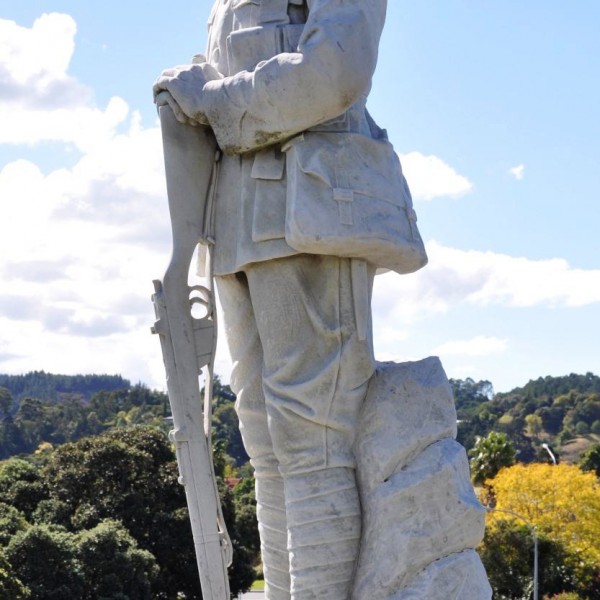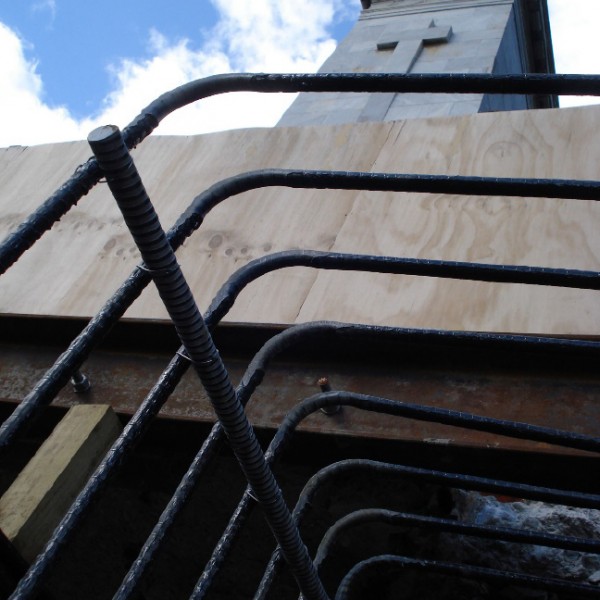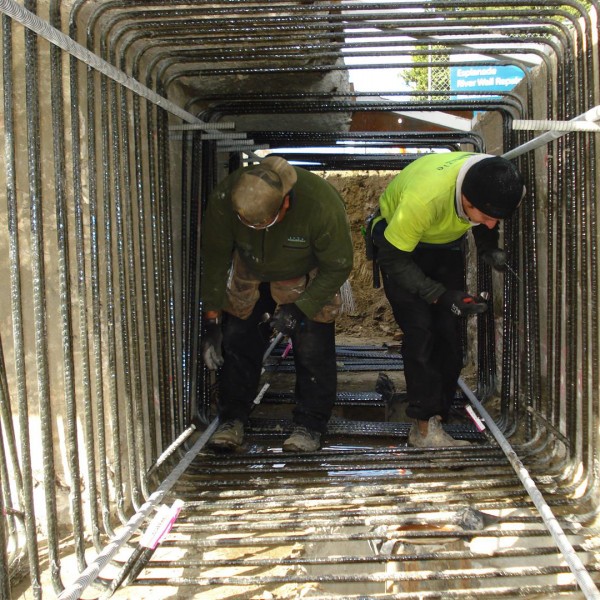The Gisborne Cenotaph, erected on the Turanganui River bank in 1923, suffered significant structural damage during a 6.8 magnitude earthquake in December 2007. The earthquake left this nationally significant monument at risk of serious damage in future seismic events.
Major strengthening of the foundations was necessary to protect the Cenotaph. These works included the removal of soil surrounding the foundations, demolishing portions of the original foundation and casting a substantial foundation ring beam around the central core of the Cenotaph. This new foundation was supported directly on screw piles and designed to support the entire Cenotaph structure.
The consultants ensured the repairs were undertaken to give longevity and minimize any need for future repairs. A significant feature of the remedial work, was to ensure that the Cenotaph was not damaged through long term corrosion of any reinforcing present. As a result, Mateenbar™ was specified for the stirrups and longitudinal steel reinforcing the foundations. Unlike steel, Mateenbar™ doesn not need any extra form of corrosion protection – an important feature considering the salinity of the Cenotaph’s coastal location.
Time savings with Mateenbar™
A significant benefit to the contractor was the lightness and cleaner surface of the Mateenbar™ which allowed for easier installation and tying. Mateenbar™ being 1/4 of the weight of steel, the 8m lengths of #10 (32mm) rebars were easily installed by 1-2 people.
Currie Construction’s Project Manager, Mark van Wijk noted, “its weight made it far easier to handle”.
Using Mateenbar™ in the newly built, upgraded foundations of the Cenotaph not only saved time during installation, but also ensures a lasting legacy of another 100 years.


